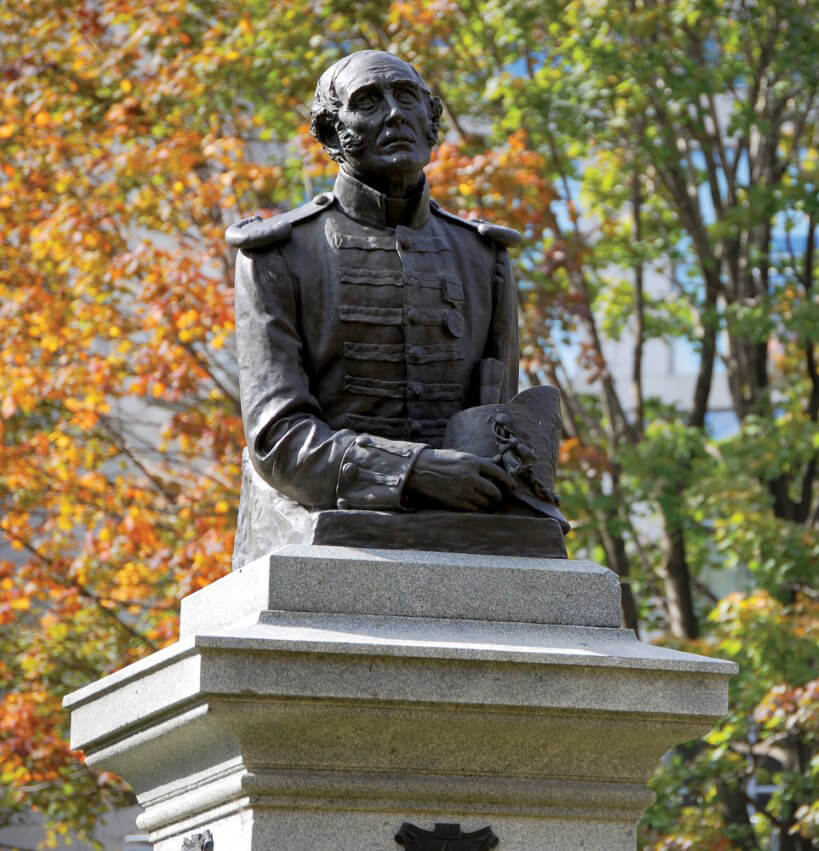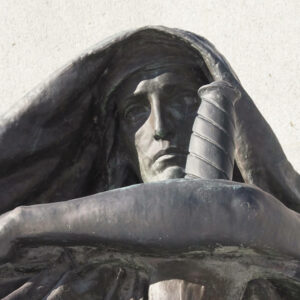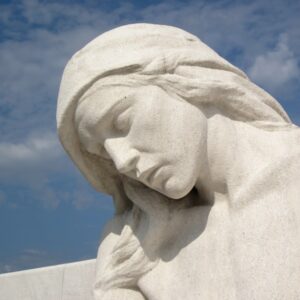The Old Soldier, War of 1812 Memorial 1903–7

Walter S. Allward, The Old Soldier, War of 1812 Memorial, 1903–7
Bronze and granite
Victoria Memorial Square, Toronto
One of Allward’s most important early works is his sculpture of an old soldier, which forms part of the monument in Victoria Memorial Square (formerly Portland Square) honouring soldiers who died in the War of 1812. Early plans had called for a bronze full-length representation of a military figure in uniform surmounting the pedestal, a format commonly used for Canadian war memorials, but Allward chose instead a bronze half-length figure of a soldier, whose experience of the misery of war is reflected in his haunted expression and pose. As described in one account, the sculpture depicts “an old one-armed soldier in the uniform of 1812, holding his shako [a military cap] in his remaining hand, and gazing heavenward.” Created following a trip to London and Paris in the summer of 1903, the work marks a turning point in Allward’s career, borrowing from such works as The Burghers of Calais, 1884–95, by Auguste Rodin (1840–1917), in emphasizing the subject’s inner suffering rather than his outward appearance. Allward had viewed works by Rodin during his 1903 trip to Europe.

The War of 1812 Memorial, commissioned by the Army and Navy Veterans’ Association of Toronto, was erected on the site of an old burial ground used between 1794 and 1863 for soldiers and their families from nearby Fort York. After the cemetery was closed, the area was neglected for almost twenty years, prompting the city to establish a park and to grant the Army and Navy Veterans’ Association permission to construct a memorial there. The association was slow to develop the project, but by 1901 the Toronto Guild of Civic Art, which had been entrusted by the association to supervise the work, had retained the services of the Toronto architect Frank Darling (1850–1923) to prepare a design.
The monument’s cornerstone was laid on July 1, 1902, and the pedestal was unveiled later that year, on November 24. The sculpture was delayed owing to insufficient funds, which were being raised mainly through public subscription. In July 1905 the Government of Ontario contributed money, and Allward finished the work the following year, with the official unveiling on January 5, 1907. Despite its obscure location, a few writers recognized that the sculpture was an important milestone for the artist. Among them was Arthur E. McFarlane, who referred to The Old Soldier as “profound feeling nobly expressed.”

 About the Author
About the Author
 More Online Art Books
More Online Art Books
 Acknowledgements
Acknowledgements